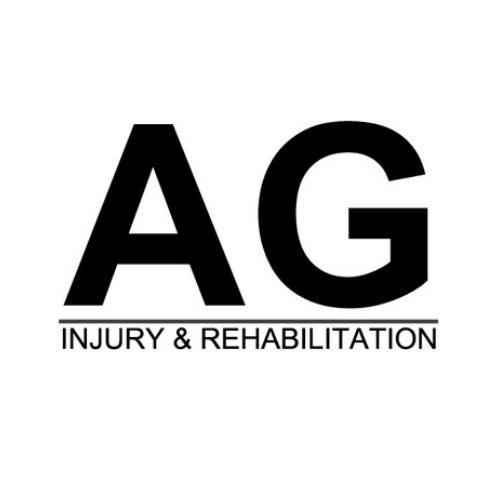Did you know that the human head weighs about 10-12 pounds, but poor posture can make it feel like 60 pounds to your neck muscles? With remote work becoming the norm, more people than ever are battling upper back and neck pain from hours hunched over computers and devices.
Enter posture correctors - wearable devices promising to fix our slouching habits and relieve pain. But in a world of quick-fix solutions and wellness trends, many wonder: do these devices actually deliver results? Let's dive into the science, research, and real user experiences to uncover the truth about posture correctors.
Upper Back and Neck Pain From Computer Use
Computer use takes a toll on our bodies. Studies show that 50-70% of computer users experience neck and shoulder problems. When you sit for long periods without proper support, your muscles strain to hold your head and shoulders in position. This continuous tension leads to discomfort and can progress into lasting musculoskeletal issues over time.
Regular computer users often develop forward head posture and rounded shoulders from looking down at screens. This adds extra pressure to the upper back and neck muscles, creating a cycle of tension and pain.
Overview of Proper Posture and Ergonomics for Computer Users
Good posture at your computer starts with the basics: keep your feet flat on the floor and knees bent at 90 degrees. Your back should rest against the chair for support, while your shoulders stay relaxed and pulled back.
Position your monitor at eye level and arm's length away to prevent neck strain. Your keyboard and mouse should sit close enough that you don't have to reach or stretch to use them. These simple adjustments reduce muscle fatigue and help maintain proper alignment throughout your workday.
Definition and Purpose of Posture Correctors
Posture correctors are support devices that help align your spine and shoulders during daily activities. These tools work by pulling your shoulders back and providing physical support to maintain proper spinal position.
The main goal of posture correctors is to fix muscle imbalances caused by long-term poor posture habits. By giving your body consistent feedback about proper alignment, these devices help you become more aware of your posture and build better habits over time.
Types of Posture Correctors
Traditional posture braces and harnesses wrap around your shoulders and upper back, providing physical support to maintain alignment. These basic options work well for short-term use but can feel bulky under clothing.
Smart posture devices use electronic sensors to track your position and vibrate when you slouch. These tech-based solutions offer real-time feedback through smartphone apps.
Posture-correcting shirts feature built-in tension panels that gently pull your shoulders back. These look like regular clothing and work well for all-day wear, though they typically cost more than standard braces.
How Posture Correctors Are Designed to Work
Posture correctors function by applying gentle force to pull your shoulders back into proper alignment. They create physical resistance when you slouch, training your muscles to maintain better position. Most designs focus on the upper back, using straps or tension panels to support proper alignment.
These devices also work through muscle memory and physical feedback. When you wear them, they remind your body how correct posture feels. The constant physical cues help your nervous system learn and maintain proper alignment, similar to how athletic training builds new movement patterns.
Scientific Research on the Effectiveness of Posture Correctors
Studies examining posture correctors show mixed results. Available research points to positive outcomes with posture shirts, which can reduce discomfort and change posture patterns in computer users. However, scientists note the need for more high-quality studies to confirm these benefits.
The current evidence suggests that posture correctors work best when used as part of a complete treatment plan. Most studies focus on short-term effects, leaving questions about long-term benefits unanswered.
User Testimonials and Experiences with Posture Correctors
People who try posture correctors report mixed results. Many users say the devices help them notice when they're slouching and make them more mindful of their posture throughout the day. Some report noticeable pain reduction in their neck and shoulders after regular use.
Others find the devices uncomfortable to use consistently. Common complaints include straps that dig into armpits and difficulty putting the correctors on properly. Several users note that while the support feels good during use, the effects often don't last after removing the device.
Potential Benefits of Using Posture Correctors
Wearing a posture corrector can reduce neck and shoulder pain within a few weeks of regular use. Many users report less muscle tension and better range of motion during daily activities.
These devices help build awareness of your posture habits throughout the day. As you become more conscious of your positioning, you naturally start to sit and stand straighter. This improved alignment often leads to better breathing, less fatigue, and increased focus while working at your computer.
The physical support from posture correctors also helps prevent muscle strain during long periods of desk work, making it easier to stay productive.
Limitations and Risks Associated with Posture Correctors
Using posture correctors for too long can make your back and shoulder muscles weak. When you depend on these devices, your muscles don't work as hard to maintain good posture on their own. Over time, this might lead to more posture problems.
These tools don't fix the root causes of poor posture, like weak core muscles or bad ergonomic setups. They're also not right for everyone - people with certain spine conditions, injuries, or chronic pain should talk to their doctor before using one.
Research shows that wearing posture correctors without doing strengthening exercises can create a cycle of muscle weakness and increased dependence on the device.
Comparison of Posture Correctors to Other Methods of Improving Posture
Posture correctors offer a passive approach to fixing posture, while exercises demand active muscle engagement. While braces and shirts provide quick support, they don't build strength like targeted workouts do. Studies suggest that regular stretching and strength training create more lasting improvements in posture than do posture correctors work alone.
Compared to workplace ergonomic changes, posture correctors fall short in preventing long-term problems. A well-designed computer setup combined with movement breaks shows better results than relying on corrective devices. Still, posture correctors can work alongside these methods, especially for people who need extra support during long workdays.
Expert Opinions on the Use of Posture Correctors
Health professionals have varied views on posture correctors. Physical therapists often recommend them as temporary posture aids rather than permanent solutions. Many specialists point out that these devices work best when paired with targeted exercises and proper workplace setup.
Medical experts stress that posture correctors should be used for limited periods, typically 1-2 hours daily. They note that extended wear can lead to muscle dependency. Most professionals agree these tools serve as helpful reminders for better posture, but shouldn't replace active efforts to build core and back strength.
Proper Usage and Implementation of Posture Correctors
Start by selecting a posture corrector that matches your needs. If you mainly work at a desk, choose a device that fits comfortably under clothing. For active users, pick a flexible brace that allows full movement during exercise.
Wear the corrector for 20-30 minutes initially, adding 10-15 minutes each week. Never exceed 2-3 hours of daily use, as this can weaken your muscles. Pay attention to how your body responds - if you feel pain or tingling, adjust the fit or reduce wearing time.
Remember that posture correctors work best alongside good habits. Take regular breaks, practice proper sitting position, and maintain an ergonomic workspace setup.
Alternative Methods for Improving Posture and Reducing Pain
Regular exercise helps build the strength needed for good posture without devices. Simple moves like chin tucks and squeezes, shoulder blade squeezes, and chest stretches work your postural muscles. Add core-strengthening exercises like planks and bridges to support your spine.
Daily habits matter too. Set phone reminders to check your posture, take short walks every hour, and adjust your sleeping position. Many people find that yoga and basic stretching routines help them stay aware of their body position throughout the day.
Ergonomic Setup Recommendations for Computer Workstations
Your workstation setup plays a key role in preventing neck and back strain. Start by placing your chair at a height where your feet rest flat on the floor and your knees form a 90-degree angle. Your computer screen should sit at arm's length, with the top edge at eye level.
Position your keyboard so your elbows stay close to your body at a 90-degree angle. Add a wrist rest to keep your hands level while typing. Consider using a monitor stand or laptop riser to achieve proper screen height, and try alternating between sitting and standing positions throughout your day.
Exercises and Stretches to Alleviate Upper Back and Neck Pain
Simple neck stretches can provide quick relief during computer work. Practice chin tucks and squeezes by gently pulling your chin back while keeping your spine straight. Add shoulder blade squeezes by pulling your shoulders back and down, holding for 5-10 seconds.
For upper back relief, try doorway stretches to open your chest muscles. Stand in a doorway with your arms raised to shoulder height, then step forward until you feel a gentle stretch. Roll your shoulders backward and forward throughout the day to keep muscles loose and blood flowing.
Long-term Strategies for Maintaining Good Posture
Building good posture takes time and consistent effort. Make a habit of checking your alignment several times each day - set phone reminders or link posture checks to regular workplace ergonomics like checking email or drinking water.
Movement keeps your muscles active and strong. Stand up every hour, walk around, and do simple stretches. Add basic exercises like wall stands and neck rolls to your daily routine. Watch yourself in mirrors and windows to spot alignment issues before they become problems.
Track your progress with weekly posture assessments. Notice how your body feels and moves as you build better habits.
When to Seek Professional Medical Advice for Persistent Pain
Pain lasting more than two to three weeks despite rest and self-care methods needs medical attention. Watch for warning signs like numbness or tingling in your arms and hands, which could indicate nerve problems. Seek immediate care if you notice muscle weakness or pain that gets worse with certain movements.
A healthcare provider can properly assess your condition through physical tests and imaging if needed. They'll check your range of motion, muscle strength, and look for underlying issues that home treatments might miss.
The Bottom Line on Posture Correctors
While posture correctors can serve as helpful tools for building awareness and providing temporary support, they're not magic solutions for long-term posture problems. The research shows these devices work best when used as part of a comprehensive approach that includes proper ergonomics, regular exercise, and mindful movement habits.
Remember that lasting posture improvements come from consistent effort and lifestyle changes. Whether you choose to use a posture corrector or not, focus on building strength, maintaining good ergonomics, and staying active throughout your day. If pain persists, don't hesitate to seek professional guidance for personalised solutions.
Check out my recommended posture corrector here. Currently on offer for less than £20


